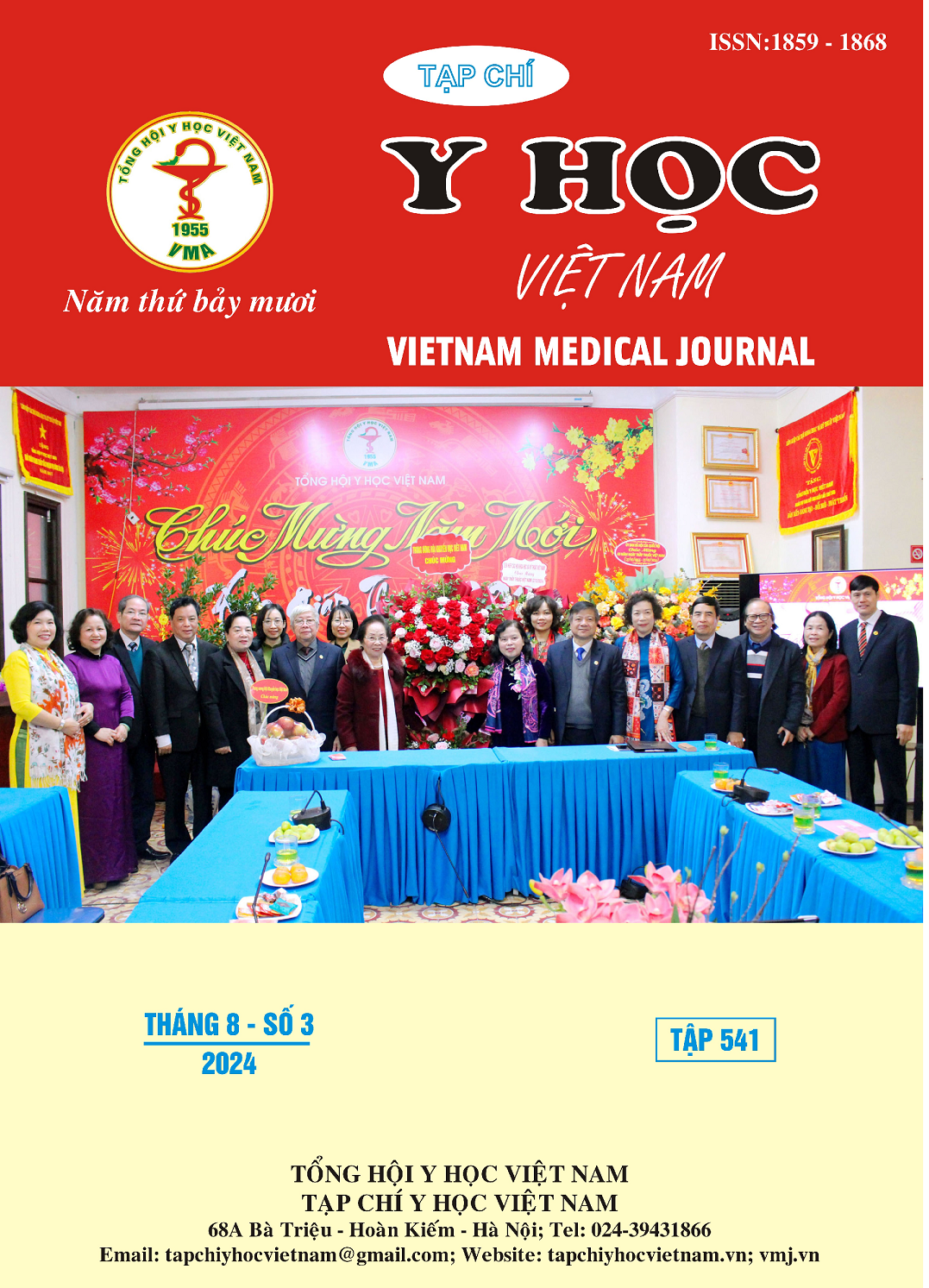RỐI LOẠN ĐIỆN GIẢI TRONG CHẤN THƯƠNG SỌ NÃO NHẸ VÀ TRUNG BÌNH TẠI KHOA PHẪU THUẬT THẦN KINH II BỆNH VIỆN HỮU NGHỊ VIỆT ĐỨC NĂM 2023
Nội dung chính của bài viết
Tóm tắt
Đặt vấn đề: Rối loạn điện giải sau chấn thương sọ não là 1 điều đã được công nhận. Việc xét nghiệm điện giải cho nhóm bệnh nhân chấn thương sọ não nhẹ và trung bình thường bị bỏ quên hoặc chỉ xét nghiệm khi bệnh nhân có bất thường về tri giác. Mục đích của nghiên cứu để mô tả thực trạng rối loạn điện giải trên bệnh nhân chấn thương sọ não nhẹ và trung bình. Đối tượng và phương pháp: Nghiên cứu mô tả cắt ngang trên 102 bệnh nhân tuổi từ 17-70, Glasgow từ 9 đến 15 điểm điều trị tại bệnh viện hữu nghị Việt Đức từ tháng 3/2023-9/2023. Kết quả: Có 2% bệnh nhân tăng natri máu, 47% bệnh nhân hạ natri máu. 9% bệnh nhân hạ kali máu nhưng tất cả bệnh nhân đều được sử dụng kali trong quá trình điều trị. Rối loạn natri máu xảy ra phổ biến nhất ở tổn thương dập não (34%) và các tổn thương phối hợp có dập não (44%). Rối loạn natri máu xảy ra ở các ngày từ ngày thứ 2 đến ngày thứ 8 sau nhập viện, tập trung vào ngày thứ 3(20/50 ca bệnh) đến ngày thứ 4 (12/50 ca). Kết luận: 49% bệnh nhân chấn thương sọ não nhẹ và trung bình có rối loạn natri máu, trong đó hạ natri máu là phổ biến, xảy ra nhiều nhất vào thời điểm từ ngày thứ 3 đến ngày thứ 4 của bệnh
Chi tiết bài viết
Từ khóa
Rối loạn điện giải, chấn thương sọ não nhẹ và trung bình
Tài liệu tham khảo
1. Lý Ngọc Liên, Đồng Văn Hệ (2013), Chấn thương sọ não, Nhà xuất bản Y học.
2. Lý Ngọc Liên, Đồng Văn Hệ (2013), Rối loạn nước và điện giải trong chấn thương sọ não, Chấn thương sọ não, Nhà xuất bản y học.
3. Nguyễn Viết Quang (2013), Nghiên cứu sự rối loạn natri huyết tương ở bệnh nhân chấn thương sọ não nặng, Y học thực hành, (886) , 70-73
4. Pin-On P, Saringkarinkul A, Punjasawadwong Y, Kacha S, Wilairat D. Serum electrolyte imbalance and prognostic factors of postoperative death in adult traumatic brain injury patients: A prospective cohort study. Medicine (Baltimore). 2018;97(45):e13081. doi:10.1097/MD.0000000000013081
5. Wang GH, Yan Y, Shen HP, Chu Z. The Clinical Characteristics of Electrolyte Disturbance in Patients with Moderate and Severe Traumatic Brain Injury Who Underwent Craniotomy and Its Influence on Prognosis. J Korean Neurosurg Soc. 2023;66(3):332-339. doi:10.3340/jkns.2022.0078
6. Adiga, U., Vickneshwaran, & Sen, S.K. (2008). Electrolyte derangements in traumatic brain injury.
7. Agha A, Phillips J, Thompson CJ. Hypopituitarism following traumatic brain injury (TBI). Br J Neurosurg. 2007;21(2):210-216. doi:10.1080/02688690701253331
8. Koenig MA. Cerebral Edema and Elevated Intracranial Pressure. Continuum (Minneap Minn). 2018;24(6): 1588-1602. doi:10.1212/CON. 0000000000000665
9. Tenny S, Patel R, Thorell W. Mannitol. In: StatPearls. Treasure Island (FL): StatPearls Publishing; November 14, 2022.


